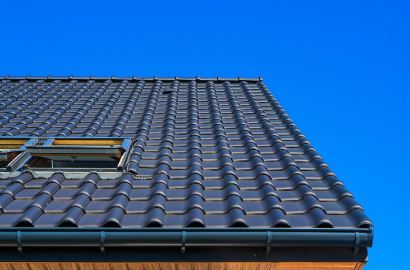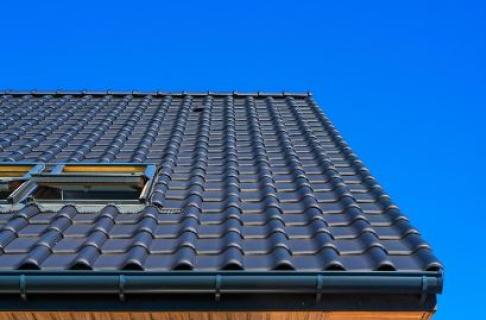This article shall describe the essentials of estimating the cost of a new roof through a general background of roofing and what factors influence the pricing so as to guide the reader on how to get a realistic estimate. Finally, you will understand the costs you are likely to incur financially when carrying out a roof replacement project.
Introduction:
A roof is not simply a canopy but it is one of the fundamental structural additions to the building and a shield against harsh weather. Regardless of if you have a leak, serious damage, or if your roof is just worn out it helps to know how to calculate the cost of a new roof to ensure your home’s worth and safety. Let me share with you the detailed step-by-step guide to help you get prepared and make the right decision on roofing.
Factors Influencing Roof Replacement Costs:
Several key factors determine the cost of a new roof. Understanding these can help you estimate expenses accurately:
Roof Size and Complexity:
Cost increases with the size, especially if the roof is complex in design. Roof shapes for pitched roofs with multiple pitches, gulleys and/or complex shapes would also increase the amount of material and work done as well.
Materials:
This depends on the sort of material used on the roof since different materials will have different prices. Some of the choices include asphalt shingles, metal roofs, tile roofs and slate roofs; each of which come with different prices and durability.
Labor:
That is why labor costs may depend on the area where the roofing contractor is located, the degree of difficulty of work, as well as whether the company exudes professionalism and the level of popularity among clients.
Roof Pitch:
Roofs that have higher slopes are very complex to construct or repair that tends to mean that they are very expensive to construct or repair hence leading to higher labor cost.
Removal of Old Roof:
If there is an existing roof, then it has to be stripped, which contributes to the labor in addition to the disposal costs.
Permits and Inspections:
Most places demand permission and assessment and increase the general costs.
Underlayment and Accessories:
These include items like underlayment, flashing, vents, and gutters, which are essential for a functional roof but can add to the expense.
Also Read : How to Calculate the Length of a Roof Rafter?
Steps to Estimate Roof Replacement Costs:
Measure Your Roof:
Start by determining the area of the roof that you want to cover by finding the square footage. If it is not a basic one, then divide the figure into parts and find the area of each part. Measures of various characteristics of the building are important in determining the amount of material needed.
Choose Your Materials:
There are different types of roofing materials available, and therefore the client has to make his/her choice. Other issues that should warrant attention include the product’s stake, appearance, and resistance to the climate in one region. Look at the prices of your selected material per square foot.
Calculate Material Costs:
Divide the total cost of the selected material by the total square footage of the roof to get a figure that, when multiplied by the actual square footage, will give us the total cost of the roofing material. Yet, you still need to factor in underlayment and accessories in your materials list.
Factor in Labor Costs:
Thus, costs can fluctuate tremendously concerning the quantity of labor necessary to accomplish a given quantity of production. Ask for several quotes from the contractors in order to know the reasonable price for the particular service. Do not forget to ask for references, read their ratings and experience.
Also Read : TYPES OF LONG SPAN ROOF TRUSSES
Include Removal Costs:
In the event that the structure of a new roof requires the existing one to be stripped off, factor in the cost of labor as well as the disposal cost. This is generally billed on the basis of square meters.
Account for Permits and Inspections:
It is recommended to contact your local authorities to find out if there are any permits needed and if there is any charge for the same. Also, incorporate any fees for any inspections that may be required.
Add Contingency Budget:
The contingency budget on unforeseen expenses is quite useful and is usually created to be between 10-15% of the total cost estimate.
Detailed Example Calculation:
Let’s go through a detailed example to illustrate the estimation process:
- Roof Size: Assume a roof size of 2,000 square feet.
- Material Selection: Choose asphalt shingles, costing approximately $4 per square foot.
- Material Costs: 2,000 sq. ft. x $4/sq. Ft. = $8,000.
- Underlayment and Accessories: Budget around $1,500 for these.
- Labor Costs: Suppose labor costs are $3 per square foot. 2,000 sq. ft. x $3/sq. ft. = $6,000.
- Removal of Old Roof: Assume the cost is $1 per square foot. 2,000 sq. ft. x $1/sq. ft. = $2,000.
- Permits and Inspections: Estimate $500.
- Contingency Budget: Calculate 10% of the total costs so far. $8,000 (materials) + $1,500 (accessories) + $6,000 (labor) + $2,000 (removal) + $500 (permits) = $18,000. Contingency: $18,000 x 0.10 = $1,800.
- Total Estimate: $18,000 + $1,800 = $19,800.
Additional Considerations:
Energy Efficiency:
While using material that is energy efficient might cost more initially the cost of energy bills in the long run will be cheaper. For instance, the cool roofs allow more of the sunlight to reflect and absorb less of the heat thus making homes cooler in summer and cutting on the cost of air conditioning.
Warranty:
Hardware, such as the roofing materials and people who install the roofs have guarantees attached to them. It is also important to note the terms and condition of the policy, the period of the coverage. Some might be longer and are more expensive initially, but they provide the consumer with more coverage and confidence.
Seasonal Factors:
The cost of roofing is usually higher, especially during festive seasons or any other season that is not considered off-season. However, you can sometimes negotiate and secure better rates when you schedule your project during off-peak hours.
Local Climate:
Consider your local climate when choosing roofing materials. Materials that perform well in one region might not be suitable for another. For instance, metal roofs are excellent in areas with heavy snowfall, while clay tiles are ideal for hot climates
Future Maintenance:
Some roofing materials require more maintenance than others. Factor in long-term maintenance costs when selecting materials. For example, while asphalt shingles are cheaper initially, they might need more frequent repairs compared to metal or tile roofs.
Conclusion:
Estimating the cost of a new roof involves careful consideration of various factors, from the type of materials to labor and additional expenses. By breaking down each component and obtaining multiple quotes, homeowners can budget effectively and ensure they receive a fair price for their roofing project.
Remember, investing in a quality roof is investing in the long-term safety and value of your home. With this guide, you are now equipped to navigate the process with confidence, ensuring a smooth and successful roof replacement.
By considering the roof's size, material, labor, removal costs, permits, and a contingency budget, you can form a detailed and accurate estimate. Don't forget to factor in additional considerations like energy efficiency, warranties, seasonal pricing, local climate, and future maintenance.
By being thorough in your estimation process, you will ensure that your roofing project is well-planned and financially manageable, providing your home with the protection it needs for years to come.

